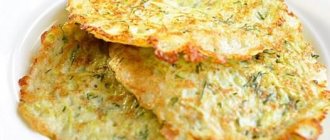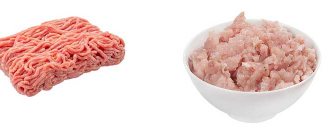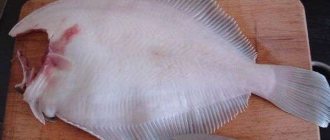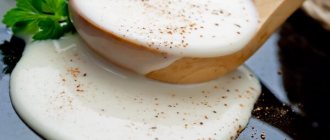Pesto
Pesto sauce is a classic example of the national Italian temperament and flavor.
The perky green sauce pleases the eye and pleases the stomach, the aroma of pesto sauce is so bright and inviting that it is impossible to resist it under any circumstances. Historians and researchers believe that the ancestor of modern pesto sauce was known long before the Roman Empire, and its authorship is attributed to the ancient Persians. It is known for certain that sailors from Genoa had their own distinctive aroma at any time of the year - the smell of fresh basil. After all, pesto sauce could be stored much longer than any fresh herbs.
In a classic Italian recipe for pesto sauce, we will never see the proportions of the ingredients, only a mention of which products from which region are preferable. This is the beauty and zest of Italian cuisine - there will never be two identical dishes, there is always a lot of scope for creativity and imagination.
Pesto sauce calories
The calorie content of pesto sauce is 454 kcal per 100 grams of product.
Ingredients of pesto sauce
The chemical composition of pesto sauce includes: vitamins A, B1, B2, B5, B6, B12, C, D, E, K and PP, as well as potassium, calcium, magnesium, copper and manganese, iron, zinc, phosphorus and sodium .
The pesto sauce should contain fresh basil (necessarily green, “lemon”), extra virgin olive oil, garlic, Pecorino cheese (of course, you can replace it with Parmesan), pine seeds (pine nuts, only large ones) and sea salt.
Pesto sauce in cooking
The ideal way to make pesto is to use a mortar and pestle, preferably made of marble, but a ceramic one will also work. The use of metal (blender blades) will degrade the taste of the pesto and affect the color.
The main “trick” of the preparation is that by grinding green basil leaves with large crystals of sea salt, you achieve that very consistency and uniformity of the sauce, which is important (calorizer). Cheese, grated on the finest grater, will give the sauce softness and richness, and butter, added at the very end of cooking, will bring the whole dish together.
Pesto sauce has several variations; it can be made from sun-dried tomatoes, or, for example, from arugula. Italians love pesto, it is served with almost any dish, spaghetti and pizza with pesto sauce are classic dishes.
Composition of nutrients, BJU
Pesto
| For quantity: 100 grams | ||
| Calories — 426 | Calories from fat - 367 | |
| BJU | ||
| Total fat content | 40.78g | |
| Saturated | 7.25g | |
| Polyunsaturated | 10.86g | |
| Monounsaturated | 20.47g | |
| Cholesterol | 0mg | |
| Total carbohydrate content | 7.67g | |
| Dietary fiber | 1.74g | |
| Sugar | 3.69g | |
| Squirrels | 7.1g | |
| Vitamins and microelements | ||
| A - 84.8 µg | C - 0.06 mg | |
| B-6 – 0.16 mg | B-12 - 0mcg | |
| D - 0mcg | E - 8.23 mg | |
| Calcium 231 µg | Iron 0.74 mg | |
| Magnesium 44.4 mg | Zinc 1.04 mg | |
| Potassium 345 mg | Sodium 826 mg | |
Distribution of calories for BJU:Carbohydrates (8%) Fats (86%) Proteins (6%) | ||
Pesto sauce: recipes, benefits and harm
How to make Italian seasoning at home?
Nutritional value and chemical composition, benefits and harms when consuming pesto sauce. Recipes for dishes based on it and interesting facts about the culinary additive. Pesto sauce is a signature seasoning of Italian cuisine, which is served with all dishes - salads, soups and main dishes. The full name of the product is pesto Genovese a la Olivia, where the first word means the method of preparation, and the last is the main ingredient. Indeed, the main ingredients in the classic recipe are olive oil, green basil and sheep cheese, sometimes of several varieties. The delicate sauce does not look very appetizing - a green, heterogeneous paste. But the taste is described differently, noting nutty-olive or cheese-garlic notes. Despite the seemingly incompatible ingredients, it is possible to obtain a harmonious composition.
Features of making pesto sauce
There are many options for preparing the seasoning, which can contain from 6 to 12 ingredients. It is believed that in order to make pesto, as in Italy, it is necessary to grind all the components with a stone pestle in a marble mortar (or with a wooden pestle in a ceramic or porcelain one), and not mix in a blender. Contact with metal negatively affects the taste of the final dish.
At home, pesto is prepared according to the following recipes:
- Simple sauce
. The products are taken out of the refrigerator in advance so that they warm up to room temperature. Basil leaves, 100 g, are dried with a paper towel and torn into large pieces by hand. In a mortar or ceramic bowl, pound 80 g of pine nuts and grind with coarse, preferably sea, salt. A small pinch is enough, as you can always add more salt. Pour greens and finely chopped garlic into a mortar, grind, add 100 g of sheep's cheese and knead again. All components are added one at a time, otherwise it will be difficult to obtain a uniform consistency. Olive oil is poured in last - 150 g; after thorough mixing, you can taste it. - With spinach and pistachios
. The ingredients are mixed according to the recipe already described, but instead of pine nuts, crushed pistachios are used. A quarter cup of spinach and a bunch of asparagus are boiled separately until soft, chopped and poured into a mortar until parmesan is added. Lemon juice is poured into the finished sauce after the oil. - With walnuts
. Instead of pine nuts, use walnuts in the same quantity, and instead of Parmesan, use hard, sharp cheese. It is grated before adding to the sauce (it is best to use a plastic grater). If you don’t have such an accessory at hand, you can immediately, violating the recommendations for grinding by hand, use a blender. Take 100 g of all ingredients and pour into a blender bowl - cheese, walnut kernels, dried basil. Pour in 1 tbsp. l. lemon juice, add 2 garlic cloves, season with black pepper and salt. This pesto is more homogeneous and has a creamy consistency. - Red sauce
. 2 tomatoes, always hard, cut into pieces and sprinkle with salt. Leave for 15 minutes. Place a garlic clove, 30 g of pine nuts and 15 g of walnuts, a bunch of fresh basil (a little cilantro can be used) in a blender bowl. After mixing, add olive oil - less than when preparing classic pesto, 2 tbsp. l., and then 40 g of Parmesan and 50-60 g of curd cheese - feta cheese, sirtaki, Philadelphia or the like. The tomatoes are added last. Salt and pepper to taste.
Composition and calorie content of pesto sauce
The nutritional value of the seasoning is calculated relative to the classic recipe. By changing ingredients or choosing dietary options, it can be increased or decreased.
Calorie content of pesto sauce is 454-540 kcal per 100 g, of which:
- Proteins - 5.3 g;
- Fats - 45.4 g;
- Carbohydrates - 6 g.
The vitamin and mineral composition of the product is rich and varies depending on the composition of the ingredients:
- Ascorbic acid - improves immunity and suppresses the activity of free radicals.
- Retinol equivalent - accelerates the regeneration of epithelial tissues and stops age-related changes.
- Tocopherol acetate - has an antioxidant effect and accelerates the cleansing of toxins from the body.
- Nicotinic acid - eliminates vascular spasms and increases the flow of oxygen to all organs and tissues.
- Cyanocobalamin - participates in the formation of red blood cells and normalizes the state of the DNA chain, accelerates the removal of cyanide in case of poisoning.
- Folic acid - stimulates the production of pancreatic enzymes.
- Phosphorus - distributes energy throughout organs and tissues.
- Potassium - stabilizes heart contractions, improves the functioning of the cardiovascular system.
- Sodium - retains fluid in the body, normalizes water and electrolyte balance.
- Manganese - accelerates the healing of wounds and postoperative sutures, promotes the dissolution of cholesterol.
- Magnesium - improves nerve conduction, accelerates muscle formation, has an antitoxic and anti-inflammatory effect.
- Copper - without it, the production of insulin, the formation of red blood cells and the production of energy from food are impossible.
- Zinc - a lack of substance in the body inhibits sexual function.
Pesto sauce recipe. Calorie, chemical composition and nutritional value.
Pesto sauce
is rich in vitamins and minerals such as: vitamin A - 19.9%, beta-carotene - 30.3%, vitamin C - 21.3%, vitamin E - 128.8%, vitamin K - 258.8% , silicon - 25.2%, chlorine - 23.5%, cobalt - 15.5%, manganese - 31.8%, copper - 19.1%
- Vitamin A
is responsible for normal development, reproductive function, skin and eye health, and maintaining immunity. - B-carotene
is provitamin A and has antioxidant properties. 6 mcg of beta carotene is equivalent to 1 mcg of vitamin A. - Vitamin C
is involved in redox reactions, the functioning of the immune system, and promotes the absorption of iron. Deficiency leads to loose and bleeding gums, nosebleeds due to increased permeability and fragility of blood capillaries. - Vitamin E
has antioxidant properties, is necessary for the functioning of the gonads and heart muscle, and is a universal stabilizer of cell membranes. With vitamin E deficiency, hemolysis of erythrocytes and neurological disorders are observed. - Vitamin K
regulates blood clotting. A lack of vitamin K leads to an increase in blood clotting time and a decreased level of prothrombin in the blood. - Silicon
is included as a structural component in glycosaminoglycans and stimulates collagen synthesis. - Chlorine
is necessary for the formation and secretion of hydrochloric acid in the body. - Cobalt
is part of vitamin B12. Activates enzymes of fatty acid metabolism and folic acid metabolism. - Manganese
is involved in the formation of bone and connective tissue, and is part of enzymes involved in the metabolism of amino acids, carbohydrates, and catecholamines; necessary for the synthesis of cholesterol and nucleotides. Insufficient consumption is accompanied by slower growth, disturbances in the reproductive system, increased fragility of bone tissue, and disturbances in carbohydrate and lipid metabolism. - Copper
is part of enzymes that have redox activity and are involved in the metabolism of iron, stimulates the absorption of proteins and carbohydrates. Participates in the processes of providing oxygen to the tissues of the human body. Deficiency is manifested by disturbances in the formation of the cardiovascular system and skeleton, and the development of connective tissue dysplasia.
morehide
You can view a complete directory of the healthiest foods in the “My Healthy Diet” app.
Health benefits of pesto sauce
Those who regularly include the product in their daily menu have noticed a decrease in blood cholesterol levels and a persistent decrease in blood pressure. In addition, Italians are less likely to develop heart attacks, strokes, and coronary artery disease.
The benefits of pesto sauce
:
- Thanks to basil, which contains many essential oils, it strengthens the immune system, has an anti-inflammatory effect, calms, eliminates insomnia and helps cope with stressful situations and emotional instability.
- A pleasant taste stimulates receptors on the tongue that send impulses to the brain. Serotonin is produced - the “happiness hormone”, and the mood improves.
- Olive oil, which is an essential ingredient in pesto sauce, prevents age-related changes, accelerates the removal of toxins and waste, and increases the speed of peristalsis. Thanks to the composition of this product, free radicals circulating in the intestines are captured and quickly removed from the body naturally.
- Garlic provides antimicrobial action. In addition, a natural antibiotic stimulates the production of hydrochloric acid, bile acids and digestive enzymes.
- Thanks to cheese, regular consumption of the product strengthens bone tissue, prevents the development of osteoporosis and stops age-related changes.
Contraindications and harms of pesto sauce
Only known ingredients are added to homemade sauce, so the likelihood of an allergic reaction is minimal. But with “store-bought” options you need to be careful. The composition may contain unknown ingredients, preservatives and taste improvers.
You should introduce a new product into your diet with caution if you have a history of:
- Diseases of the digestive organs - chronic pancreatitis, peptic ulcer, gastritis with high acidity, enterocolitis. Garlic increases the load on the pancreas and the digestive system as a whole.
- Bronchial asthma and atopic dermatitis - nuts have high allergenic activity.
- Gout and arthritis in the active stage. The seasoning contains a high amount of purines, which increase negative symptoms.
- Stomatitis - the pungency of garlic and spices corrodes the mucous membrane and slows down healing.
- Cholelithiasis. An increase in the rate of peristalsis is caused by an increased secretion of bile; along with it, stones can enter the bile ducts.
Pregnancy is not a contraindication to the use of seasoning, but during lactation it is necessary to analyze how the introduction of the product into the diet affects the condition of the baby.
You should not “introduce” a new taste to children under 5 years old. The effect of a multi-component dish cannot be predicted in advance; moreover, spicy foods are not recommended at this age. If you exclude sea salt, pepper and nuts from the homemade version - the most dangerous ingredients, you will end up with a fatty paste of herbs and cheese that has nothing in common with the original product.
Classic Pesto in our version: inexpensive and tasty
Ingredients:
- Fresh green basil – 250 gr
- Cashew and pine nuts - 100 gr
- Parmesan cheese – 70 gr
- Garlic - 3 cloves
- Extra virgin olive oil – 100 ml
- Sea salt – 1-1.5 tsp.
- Freshly ground black pepper – 0.5-1 tsp.
Preparation:
1. Fry the nuts in a dry frying pan.
2. Wash and dry the basil. Send to combine.
3. Add garlic, salt, pepper and olive oil to the basil. Grind at high speed in short bursts (Why? See the “Helpful Hints” section at the end of the article) until smooth.
4. Add grated nuts and shredded cheese to the mixture. Mix everything again.
5. Taste the resulting mixture and add ingredients (butter, nuts or cheese) if necessary. use your own taste, but the Pesto should be thick enough.
Recipes with pesto sauce
This seasoning goes well with first courses, salads and even desserts. This additive gives the most ordinary products an original taste.
Recipes with pesto sauce:
- Sand baskets
. The sauce is prepared according to the classic recipe. Beat 100 g of butter with 125 g of sugar with a mixer, add an egg, a pinch of vanillin and 2/3 teaspoons of baking powder. Stir, combine with flour - 250 g, add salt. The batch is wrapped in cling film and left for an hour on the refrigerator shelf. Preheat the oven to 220°C, grease the cake pans with sunflower oil. Roll out identical lumps of dough, place them in molds, and press down to distribute the dough along the walls. Bake for 10-15 minutes. Vegetables of your choice are grilled. Cut into small pieces, put in molds, put in the oven for 2 minutes. Before serving, spread pesto on top. - Chicken breasts
. The fillet is cut into small portions and placed on a hot frying pan. Stir constantly until a golden brown crust appears. When the meat is half fried, pour white wine into the pan and add spices to taste. The fried chicken is mixed, without removing from the heat, with sour cream and red pesto. As soon as everything boils, you can turn it off. Potatoes are served as a side dish. - Squid with pesto
. Potatoes are fried in vegetable oil until golden brown. Longitudinal cuts are made on the squid fillets and left to marinate in olive oil and red pepper. 10 minutes before the potatoes are ready, place the fillets on a baking sheet. Served with green pesto and cilantro. - Pasta with pesto
. Knead the dough from 2 eggs and 500 g of premium wheat flour, adding a little salt. When the mixture is very dense, pour in a little ice water. Let it sit for 30 minutes so it can “rest.” If you have a food processor attachment, it will be easier to make pasta. If not, roll out the dough into thin layers, sprinkle with flour, fold several times and cut into thin strips. The finished noodles are laid out in one layer to dry. Boil for 10 minutes, mix with pesto before serving. - Soup
. Beans, 100 g, soaked overnight, boil until tender in cold water. Peel and cut vegetables - onions, zucchini, carrots, bell peppers. Carrots and onions are fried in a frying pan until golden brown, the remaining vegetables are cut into small cubes. All ingredients are placed in a saucepan, 80 g of small vermicelli are added. Salt and pepper are added just before turning off. When serving, add 1 tbsp to each plate. l. pesto sauce.
What dishes does it go with?
This seasoning goes well with first courses, salads and even desserts. This additive gives the most ordinary products an original taste.
Recipes with pesto sauce:
- Sand baskets. The sauce is prepared according to the classic recipe. Beat 100 g of butter with 125 g of sugar with a mixer, add an egg, a pinch of vanillin and 2/3 teaspoons of baking powder. Stir, combine with flour - 250 g, add salt. The batch is wrapped in cling film and left for an hour on the refrigerator shelf. Preheat the oven to 220°C, grease the cake pans with sunflower oil. Roll out identical lumps of dough, place them in molds, and press down to distribute the dough along the walls. Bake for 10-15 minutes. Vegetables of your choice are grilled. Cut into small pieces, put in molds, put in the oven for 2 minutes. Before serving, spread pesto on top.
- Chicken breasts. The fillet is cut into small portions and placed on a hot frying pan. Stir constantly until a golden brown crust appears. When the meat is half fried, pour white wine into the pan and add spices to taste. The fried chicken is mixed, without removing from the heat, with sour cream and red pesto. As soon as everything boils, you can turn it off. Potatoes are served as a side dish.
- Squid with pesto. Potatoes are fried in vegetable oil until golden brown. Longitudinal cuts are made on the squid fillets and left to marinate in olive oil and red pepper. 10 minutes before the potatoes are ready, place the fillets on a baking sheet. Served with green pesto and cilantro.
- Pasta with pesto. Knead the dough from 2 eggs and 500 g of premium wheat flour, adding a little salt. When the mixture is very dense, pour in a little ice water. Let it sit for 30 minutes so it can “rest.” If you have a food processor attachment, it will be easier to make pasta. If not, roll out the dough into thin layers, sprinkle with flour, fold several times and cut into thin strips. The finished noodles are laid out in one layer to dry. Boil for 10 minutes, mix with pesto before serving.
- Soup. Beans, 100 g, soaked overnight, boil until tender in cold water. Peel and cut vegetables - onions, zucchini, carrots, bell peppers. Carrots and onions are fried in a frying pan until golden brown, the remaining vegetables are cut into small cubes. All ingredients are placed in a saucepan, 80 g of small vermicelli are added. Salt and pepper are added just before turning off. When serving, add 1 tbsp to each plate. l. pesto sauce.
The classic Pesto recipe is very popular around the world. Not only due to its versatility, but also because the components included in its composition can always be found on sale. This easy-to-make sauce is ideal as an accompaniment to summer dishes.
Ingredients:
- Basil leaves – 50 g
- Garlic – 2 cloves
- Pine nuts – 15 g
- Hard cheese (Parmesan) – 70 g
- Sheep's milk cheese (Pecorino) – 30 g
- Olive oil – 100 ml or to desired consistency
- A pinch of coarse salt
From the indicated quantities of components you will get Pesto for dressing about 600 g of pasta. To begin, wash the basil and dry it, placing it on a paper towel. This seemingly simple procedure has pitfalls. We work as carefully as possible so as not to damage the leaves. Brushed or broken basil quickly turns black and acquires a bitter taste.
Next, using a mortar and pestle, grind the garlic, after removing the core, with a few grains of salt until it becomes a paste. Add the basil and the remaining salt and continue to knead in a circular motion.
We invite you to familiarize yourself with Chum salmon in the oven - delicious recipes for preparing baked steaks or fish cutlets with photos
When bright green juice comes out of the basil, add pine nuts. We work with the pestle again. For a richer taste, you can lightly fry the pine nuts in a dry frying pan in advance.
Finally, while continuing to stir, add the grated cheese and olive oil. The sauce is ready. Not all housewives have a mortar and pestle in their kitchen. While the blender is a regular in almost every apartment. But using an electrical appliance to prepare Pesto can have a detrimental effect on the taste of the sauce.
An easy life hack can save the situation. An hour before starting the procedure, place the blender blades in the freezer. The grinding itself should be carried out with frequent stops. This will prevent the basil from heating and oxidizing when grinding. Store the finished sauce in the refrigerator for no more than 10 days or a little longer in the freezer, thawing at room temperature as needed.
Dishes with pesto sauce will decorate any table - you will be surprised at the variety of options available! Let's discuss the right combinations of products that give a unique taste? Whether you bought the treasured jar at the store or prepared the dressing yourself, it’s important to figure out what to serve this delicious sauce with!
- Use to coat pizza and pie crusts;
- Season any pasta - especially good with seafood and chicken;
- Mix with oil and use as a salad dressing;
- Spread on a slice of bread - a delicious sandwich is ready;
- Stir in light yogurt or sour cream and serve as a dip for chips, tortilla chips and toast;
- Add when baking bread;
- Don't forget to put a spoon in the classic minestrone;
- Add a small amount of dressing to hummus to transform the usual snack.
Let us note what the dressing in its pure form is combined with:
- Meat and fish - especially steaks;
- Poultry – fried or stewed;
- Fresh and stewed vegetables;
- Sliced cheese and bread.
Agree, the list of dishes is huge - you can experiment and feel free to add dressing to taste, without wondering what pesto sauce is eaten with! Now let's get to the fun part - let's talk about how to make pesto sauce at home!
Interesting facts about pesto sauce
Judging by the fact that cookbooks dating back to 1865 describe several options for preparing the original Italian seasoning, the product was widespread in Italy.
There is an opinion that the invention of pesto sauce was accidental. Basil was used as an antidote after bites of snakes and poisonous insects - tarantulas and scorpions, to treat infectious diseases, including tick-borne encephalitis, and skin problems. Eczema, dermatitis and some skin diseases were treated with a mixture of basil and sunflower oil. One of the patients tried a pleasant-smelling ointment and liked the taste. Since then, it has taken its rightful place in the national cuisine of Liguria. Later, other components were introduced into the pesto sauce, which significantly improved the taste.
Basic variations of classic Italian seasoning recipes:
- Pesto Genovese
. Features of the variety: basil from Genoa (it does not have a mint flavor), instead of pine nuts there are seeds of Italian pine pine, and cheese is pecorino or parmesan. Olive oil is cold pressed only. - Red pesto
. This sauce is preferred in Sicily. It contains sun-dried tomatoes, which give it a sour taste. And in the city of Trapani, the seasoning is prepared without cheese and pine nuts are replaced with almonds. - Yellow pesto
. The creamy sauce is prepared in Southern Italy. Recipes include ricotta instead of Parmesan. - Purple pesto
. The original color is achieved by using purple basil. In addition, butter is additionally added to the composition.
How to make pesto sauce - watch the video:
The shelf life of store-bought sauce after opening the container can be increased by pouring olive oil on the surface. But it’s better to freeze homemade preparations by placing them in molds. In this case, the beneficial properties of the product are fully preserved.








